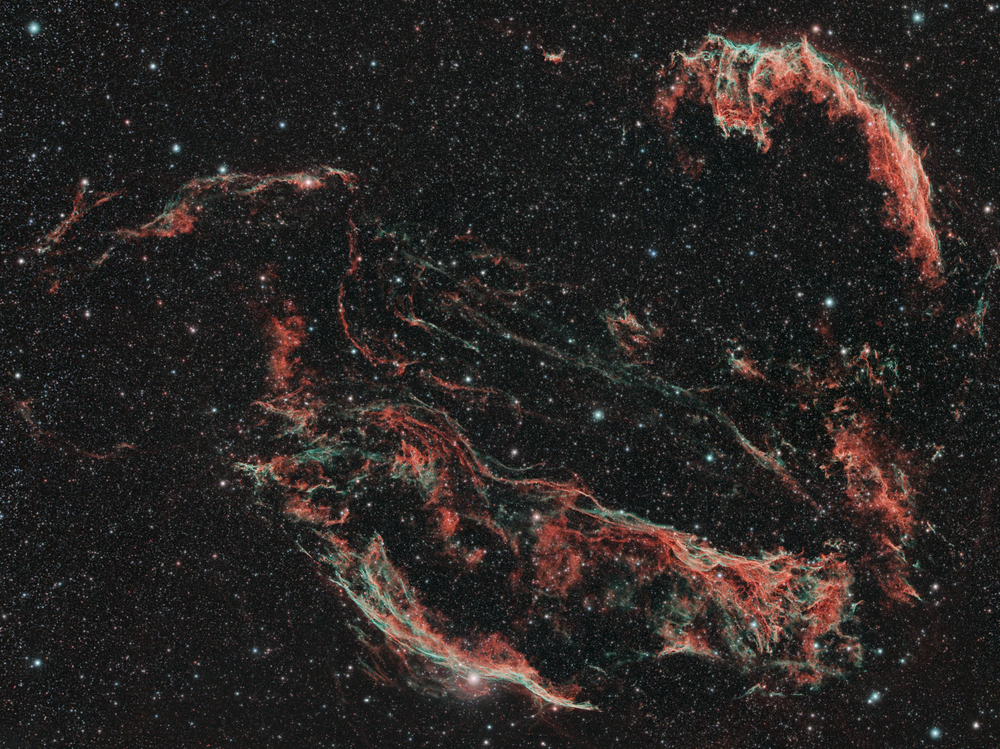Mimicking a Cosmic Accelerator
In 1949 Enrico Fermi proposed a way for charged particles that we observe as cosmic rays to attain their prodigious energies, but this acceleration mechanism has not been observed directly. Now researchers have reproduced this Fermi acceleration with ultracold atoms in an optical trap [1]. Besides opening a new path for studying energetic cosmic phenomena in the lab, the feat portends an effective way to accelerate neutral atoms, which can’t be accelerated with electric fields.
In a magnetic field, a charged particle tends to move in a helical trajectory that wraps around a field line. So the particle moves along the line and can be accelerated by the line’s motion. For example, if the particle travels along one side of a U-shaped field line toward the center of the U, it will suddenly reverse direction when it crosses to the other side. But if the bridge connecting the two sides is simultaneously moving toward the particle when the crossing occurs, the particle gets a boost, like a rubber ball bouncing off of a wall that is moving toward it.
In Fermi’s original proposal, charged particles become accelerated by many such interactions in turbulent plasma environments such as the coronas of stars or the shock fronts of supernovae. Eventually, particles gain enough energy to flee their magnetic confinement, and some may later appear as cosmic rays in Earth’s atmosphere.
This scenario is thought to be the main mechanism accelerating cosmic rays such as the energetic protons observed in the atmosphere. But magnetic fields are invisible, so Fermi acceleration has not been directly observed. Giovanni Barontini of the University of Birmingham in the UK and his collaborators wanted to create an analogue in the lab, which would allow them to study the acceleration process that occurs in astrophysical plasmas. In their experiment, the role of the charged particles was played by cold, neutral rubidium atoms, and the role of the moving magnetic fields was played by a moving “wall” of intense electromagnetic fields produced by a configuration of laser beams. The beams were shaped by a digital micromirror device (DMD), a 1920 × 1080 array of tiny mirrors, each of which can be controlled independently.
Once the 25,000 atoms reached their starting temperature of 20 nanokelvin inside a box-shaped trap of optical walls, the researchers caused one of the walls to move toward the opposite wall at a rate of a few millimeters per second. As the walls converged, the atoms bounced back and forth between them and gained energy. After about 25 ms, some of the atoms gained enough energy to escape the trap, with speeds as high as 0.5 m/s, the equivalent of a temperature above 1 millikelvin.
In addition to demonstrating the acceleration mechanism, the team also measured the energy spectrum of the escaping atoms by finely controlling the dissipation rate inside the accelerator. They compared their data with that of a 1978 derivation of the energy spectrum of cosmic rays accelerated within astrophysical shock fronts [2]. The theory was developed by plasma physicist Anthony Bell of the University of Oxford, UK. Bell’s spectrum is a power law, and the new data agreed with this prediction.
Astrophysicist Martin Lemoine of Paris Cité University has recently developed a theory to account for the randomness of Fermi acceleration [3]. “In shock waves, accelerated particles trigger plasma instabilities that generate strong turbulence,” he says. This turbulence has important effects on particle acceleration, and he hopes the new experiment will allow studies of this theory. “It would be beautiful to test these ideas,” he says.
In Bell’s theory and in Barontini’s experiment, Fermi acceleration is classical. However, some physicists are exploring how entanglement, superposition, and other quantum effects might change Fermi acceleration [4]. Barontini is also looking forward to adding quantum effects to his setup. He points out that Fermi acceleration is so universal that it could also work on quantum wave packets.
–Charles Day
Charles Day is a Senior Editor for Physics Magazine.
References
- G. Barontini et al., “Observation of Fermi acceleration with cold atoms,” Phys. Rev. Lett. 135, 025201 (2025).
- A. R. Bell, “The acceleration of cosmic rays in shock fronts—I,” Mon. Not. R. Astron. Soc. 182 (1978).
- M. Lemoine, “Effective theory for stochastic particle acceleration, with application to magnetized turbulence,” Phys. Rev. E (2025), (to be published).
- S. Barbosa et al., “Stabilizing an ultracold Fermi gas against Fermi acceleration to superdiffusion through localization,” Phys. Rev. Lett. 134, 253402 (2025).






